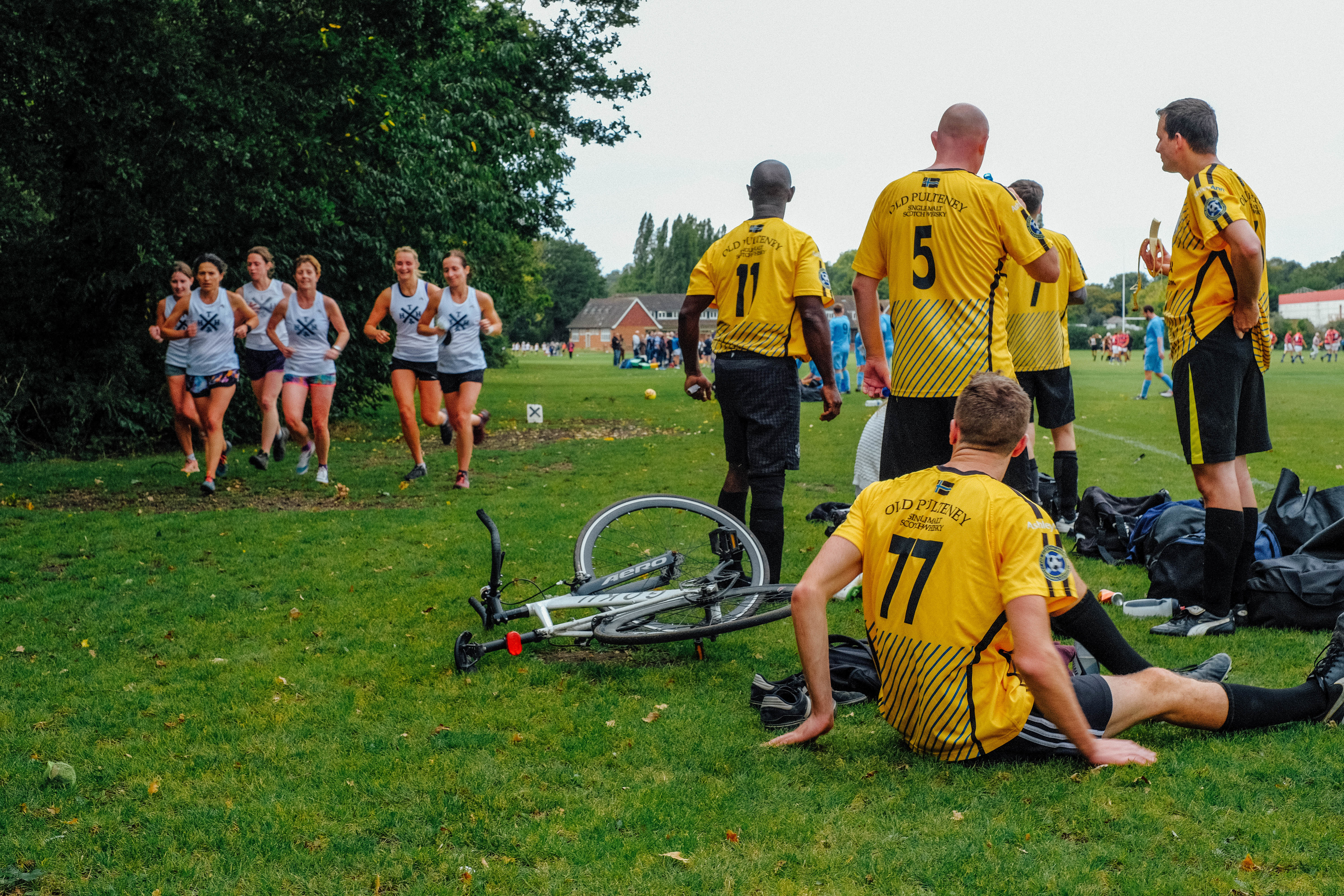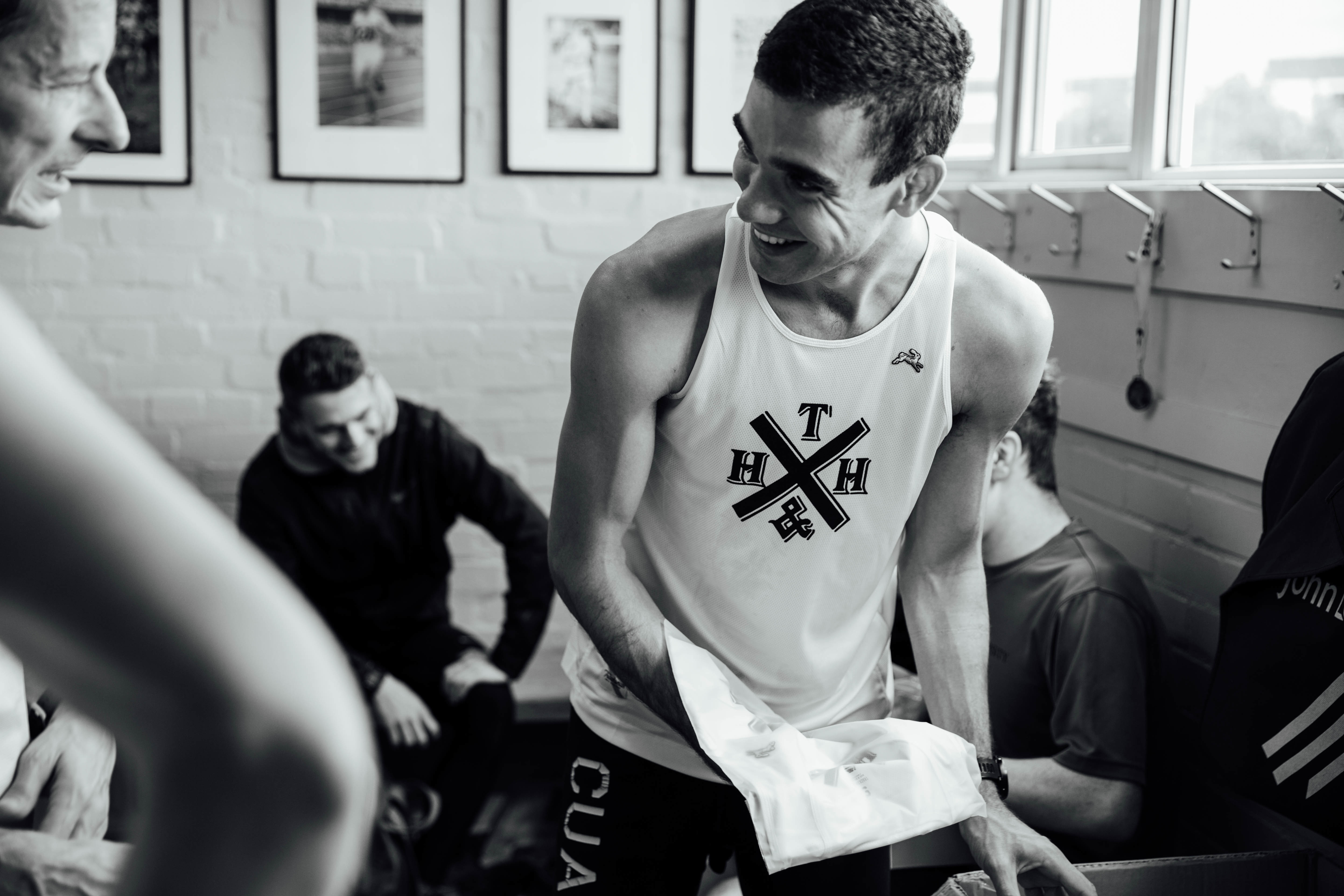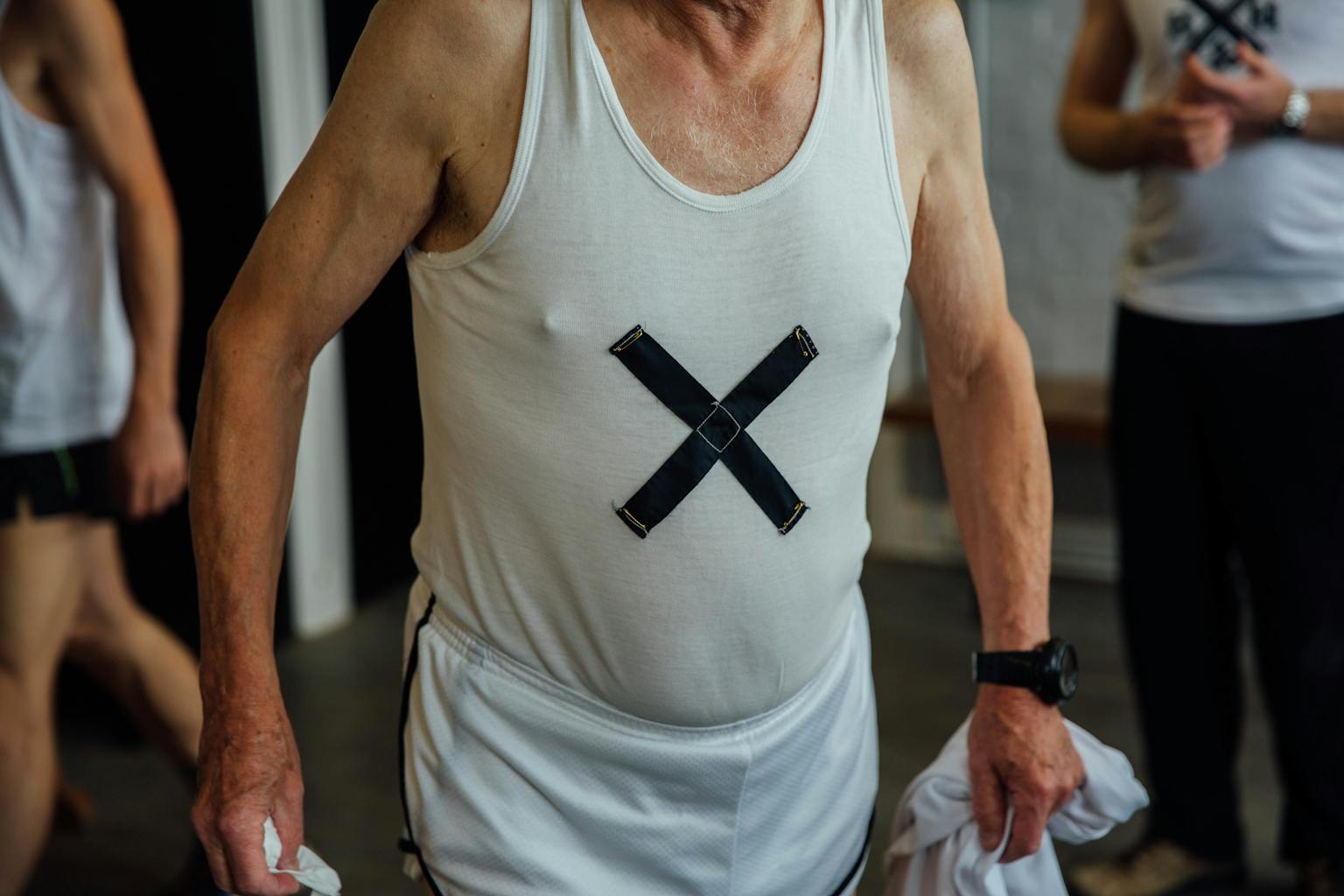

Thames Hare and Hounds
The world’s original cross country club is over 150 years old. METER joined them in London to discover where real XC began.
Words by Andy Waterman
Photography by Morgane Bigault
The great suburban wilderness of Wimbledon Common and Richmond Park form part of a London that refuses to subside into the metropolis. It remains London before it was London. Deer stalk the park. The ever present London hum of traffic noise disappears, blocked by high walls and higher trees. To run here is to step back in time.
Indeed, approaching Thames Hare and Hounds' club house, which sits on the western edge of Wimbledon Common, is a journey best conducted by pre-modern means - the nearest subway is over two miles away, leaving visitors to run the final section through the woods and across the Common. “It’s amazing that we still have Wimbledon Common and Richmond Park,” says Simon Molden, the club’s archivist. “You can easily do a 15 mile run around those two - apart from crossing the A3 - being in open country the whole time.”
Back in 1868 when the club was initially formed, this whole area would have been completely rural. “This was the most perfect area to run cross country, and with the railway, you could be here from central London in much less than an hour. We’re not far from the Thames River here either, so there was - is - endless cross country running.”
You read that right: Thames Hare and Hounds (THAH) formed in 1868, on October 17 to be precise, making it the oldest cross country running club in the world. “Walter Rye, our first president, was a member of the Thames Rowing Club a couple of miles away down in Putney. They were looking for an activity to do in the winter to keep the rowers fit, so we were effectively born out of a rowing club.” Pre-dating the formation of the club, the rowers had held a number of ‘Thames Handicap Steeplechases’ in 1867. These events were apparently well received as they led directly to the formation of the club. If you look back at early photographs of club athletes, their singlets sport the same black cross that the club’s athletes wear today. “Look back at the clubs of that age, they have an insignia that is very simple,” says Molden. “It was all about something that could be easily fashioned at home. The Saltire (cross), broadly, was two bits of black ribbon, sewn onto the running vest. It was all about creating a homemade kit.”
Technology changes, but the effort required to run fast over challenging terrain remains a constant. THAH’s original testing ground remains just as testing today as it was a century and a half ago, and provides the perfect setting for numerous races every year, from low key Saturday handicap races (for which we joined in September 2019) to Surrey League XC races and the pinnacle of the Thames year, the Varsity Match between Oxford and Cambridge.
Cross country started life in the UK as a sport of the elite public schools - that is, the fee-paying boarding schools attended by the children of the upper classes. In a game of Hare and Hounds, you would have a group of runners, of whom two would be designated as hares, and it would be their job to lay a trail with a bag of torn up paper, throwing a mark down every so often for the others to follow. “The two hares would go off and lay the trail, and 10 minutes later, the hounds would go off and follow them,” says Molden. “The idea was that towards the end, once the hares came into sight (they hounds tended to run together as a pack until the hares came into sight at the end) then it was a race to see who could get to them first. That was called the kill. The whole thing was designed to emulate hunting, and that’s where cross country came from.”
Over more than a century, these games evolved into the races we know today. But compared to other sports, like say rugby, which took its name from the public school Rugby where the game was first codified, cross country’s route through adolescence was circuitous. “The very first Oxford vs. Cambridge Athletic Match, which was track and field in 1864, actually had a steeplechase in - essentially a cross country race at the end of the meet,” says Molden. The thing was, Cambridge didn’t do steeplechasing, just Oxford, so the following year, when the meet was held in Cambridge, the hosts requested to replace the steeplechase with just a two mile race. “Cross country sort of died out at Oxford and Cambridge for about a decade after that,” says Molden. Cross country only came back to university life when Oxford founded a Hare and Hounds club, but that hiatus meant the universities weren’t particularly central to the development of the sport, in the way they were in other sports. As Molden explains: “Cross country was all about the clubs, and South West London was where the sport really formulated.”
So it was that in 1896, when the universities agreed to hold the Varsity Match on neutral territory, the president of Cambridge approached Thames Hare and Hounds and asked if the club could host their race. It’s a race that has been repeated every year since. “That created a relationship between us and Oxford and Cambridge,'' says Molden. “What’s happened since, is that the university runners started joining the club in big numbers. It’s a supply chain. Both our men’s and women’s teams now are probably made up of 50 percent recent graduates. It’s one of the things that helps us be as strong as we are.”
Thames might be strong now, but it wasn’t always so. Before the influx of graduates at the turn of the twentieth century, the club looked almost to be on its last legs, with Walter Rye’s fanatical amateurism likely the culprit. “He followed the strictest possible definition of amateurism,” says Molden. That meant not just doing it for the love, but taking it to the point of being actively non-competitive. “It wasn’t about the winning, it was about the taking part,'' says Molden. “There was a certain disdain to so-called ‘pot hunting.’”

Amateurism of the Victorian era didn’t just refer to the way you raced either: you had to come from a certain background, and at the time you could be expelled from the club if you took part in what would have been called a ‘tradesman’s meeting,’ a broad description for anything faintly professional, or involving people from the wrong social class. “It was socially exclusive, male only, and no financial gain,” says Molden. “You are essentially doing this because you have the time available. Very much like a lot of sport was in the Victorian era.”
It was the arrival of more serious competition from the north of England that led to the club’s near demise. Traditionally, racing had been held on a single loop, but to make things more attractive to spectators - and notably for gambling - the National began to be contested on a looped course, roped in. This was anathema to Rye’s high standards.
“For Walter Rye it became a bit too serious,” says Molden. “So we withdrew and it nearly killed the club. We nearly disappeared in about 1895 as people just weren’t joining the club - that year no fixtures were arranged and the secretary reported that the future looked very bleak.”
The turning point came with the Varsity Race, and then in the 1920’s, following the giant social changes brought about by the Great War. Younger members, notably a Mr. Harry Hall, began to broaden the club’s horizons, taking them back to the National and re-joining the Cross Country League.

Women joining the club was another big change and didn’t occur until 1981. Even then, it took about four years for women members to gain equal access. “You have to put these things in the context of the time,” says Molden. “The older members of the club would have been brought up in the pre-war era, so it was just a different attitude. There was an appetite for modernisation among the younger members, that if the club was going to flourish, we had to have women, as again, people just wouldn’t join - men or women. It was a generational conflict. There were all kinds of conditions put on it to mollify the older members that it wasn’t going to fundamentally change the club. But as with anything, it’s been a slow evolution and now it’s a totally mixed club. We don’t really go in for revolution. Things will happen, you just have to let them.”
The club started life in the - then - village of Roehampton, with their own room above an outbuilding at the Kings Head pub in the centre of town. The clubhouse remained virtually unchanged for over 100 years, until a fire gutted the building in the summer of 1975 and they were left homeless. That’s when they moved to their current home, among cricket, rugby, soccer and golf clubs on the edge of Wimbledon Common. The space isn’t grand, but it’s theirs: “It’s great for the Varsity Race. You have all the parents, the supporters, the runners - it’s heaving.”
In recent years across the UK, cross country running has experienced a revival with London’s Metropolitan and Surrey Leagues leading the way. Thames are increasingly a force to be reckoned with, with their Women’s Team dominant in the 2019 Southern Championships and the Men’s team placing seventh.

Men’s cross country captain, Richard Ollington, is inspired by the performances he sees around him: “I think in the US, they see college as the peak of cross country, but in the UK, you graduate and keep up the sport, and improve still. It’s a lifelong sport, not a till-your-early-twenties sport. I’m loving the sport at 25, but I look up and there are people in their 40s, 50s, 60s, still running and socialising.”
South West London remains a hotbed of running. It was in Bushy Park in 2004 that parkrun held its first ever event - what started as 13 runners is now a global community of over three million. And it’s in Teddington, at St. Mary’s University that many international athletes base themselves for the European summer season.
While spotting Mo Farah on a summer shakeout might be exciting for some, for anyone with a sense of history, running in these parks, on these trails and over these hills, the thrill of knowing this is where cross country began is incomparable. Over 150 years later, it’s still the purest, least adulterated form of the sport that remains - long may that continue.


